This blog post has first been published on Filmicon.
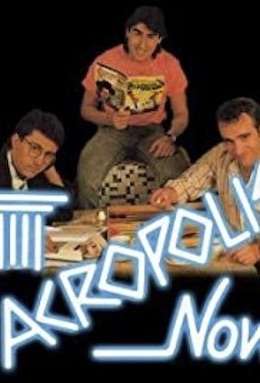 Growing up as a child of first-generation Greek-Australian migrants had countless privileges. But being different from the dominant white demographic was something I did not look too favourably upon, at that time anyway. Whiteness was all over Australian television screens as programmes were mostly British or American imports, with some Australian soaps, drama series or entertainment shows, so it was difficult to feel anything other than different. But when sitcom Acropolis Now (1989–1992) came on Australian TV, I found I could relate to and identify with the on-screen characters, for the very first time. They were mostly working-class, second-generation Greek-Australians – the children of Greek migrants to Australia, and I saw a reflection of my own culture, history, family and difference, which was enormously important for my teenage sense of identity and cultural belonging.
Growing up as a child of first-generation Greek-Australian migrants had countless privileges. But being different from the dominant white demographic was something I did not look too favourably upon, at that time anyway. Whiteness was all over Australian television screens as programmes were mostly British or American imports, with some Australian soaps, drama series or entertainment shows, so it was difficult to feel anything other than different. But when sitcom Acropolis Now (1989–1992) came on Australian TV, I found I could relate to and identify with the on-screen characters, for the very first time. They were mostly working-class, second-generation Greek-Australians – the children of Greek migrants to Australia, and I saw a reflection of my own culture, history, family and difference, which was enormously important for my teenage sense of identity and cultural belonging.
This self-reflexive approach of writing about Acropolis Now, is as important a subject now as it was then. Back then, the show was like a companion, a good friend who would come to visit once a week in small, white, country town Australia. What is more, it came with an imagined community of thousands of other second-generation Greek-Australians who, like me, were trying to make sense of the world and where to fit in it, particularly given we were “white,” but also considered ethnically different. Revisiting the show years later was like reuniting with an old friend, only to discover we had both moved on. What follows is a brief account of this friendship.
A brief look at some moments that have shaped Australian colonial history is necessary, to offer both context and broader insights into difference. Since Australia’s colonisation by the British in 1788, noticeable monitoring and interest in the country’s population has been documented (Jupp, 2002; Castles et al., 2014). Indigenous Australian populations declined markedly, and while there is literature pointing to diseases brought from Europe, such as smallpox and influenza, as having contributed to this (Meredith 2017; MacIntyre 1986), there are numerous well documented genocidal atrocities which lead to this decline (Edwards, et al. 2017; Sutton 2009; Silburn, et al. 2006; Moses 2004; Koolmatrie & Williams 2000).
After the discovery of gold in 1851, Australia’s population increased as European and Chinese immigrants sought prosperity, but large successes from Chinese miners meant Australian immigration policies changed to restrict further Chinese migration to Australia (Gibson 2017; Peluso 2017; Brown 2017). British migrants, however, were encouraged to migrate and therefore privileged under the White Australia Policy, introduced in 1901. This policy encouraged migration from Britain to Australia (Armillei & Mascitelli 2017; Healy 2016; MacIntyre 1986) while also “alleviating fear of the Chinese” (Jupp, 2002, p. 10). Following a depleted post-war population, and Australia’s inability to defend itself after the advancement of the Japanese in 1942, a large-scale immigration program “Populate or Perish” was launched, which supported European migrants to resettle in Australia, (Ndhlovu & Willoughby 2017; Fozdar 2016; Burke 2001), and ulitmately boosting the population numbers as the country’s military security was of a major concern. It was around this time my family migrated from Greece to Australia.
Despite Australia’s richness of diversity in both pre-and-postcolonial times, representations of this diversity are not historically reflected in the media. Instead, as Felicity Collins (2009) has pointed out, the reinventions and transformations of the Australian national type as urban larrikin and bush battler, continue to resurface in popular film and TV. There are, for instance, some films, TV shows and characters that have become representative of Australia over the years, the most obvious of which are Crocodile Dundee (1986), TV series Neighbours (1985-present), and TV personality Steve Irwin, before his untimely death in 2006. Such examples, however, circulate images of Anglo-Australians that are hardly representative of the country’s diverse population. Instead, these images strengthen and maintain notions of Australia remaining a British colonial outpost.
According to Stuart Hall (1996), representation is a necessary part of how meanings are made and exchanged between members of a culture. This occurs through language and signs, but also images which stand for or represent things. Drawing on Stuart Hall’s theory of representation (1996), such “Australian” representations as those mentioned above, create a sense of privileged identity. They make statements such as: this is what being Australian looks like; this skin colour is normal, desirable or ideal; and this is who belongs here. As such, these inaccurate and stereotyped representations of Australia(ns) are harmful as they are dismissive towards others, the marginalisation and invisibility of Indigenous Australians within Australian representation being a case in point. Media and popular culture, therefore, play an important part in shaping relations about race, difference, inclusion, exclusion, and belonging.
In multiracial societies such as Australia, explain Andrew Jakubowicz (2010) and James Watson (2016), the media play a central role in the production, selection and transformation of ideas about race. In my teenage years, very little presence of Indigenous or non-Anglo Australians appeared on Australian screens, and ‘difference’ when it was featured, was done so selectively. For instance, images of Indigenous Australians were most likely found in the news and focussed on sporting prowess, drunkenness or threats of violence, while images of ethnic minorities were mostly in the form of comic depictions that were laughed at and ridiculed. Two of these comic characters that are particularly memorable are Italian character Bruno, played by Greek-Australian actor Lex Marinos in the sitcom Kingswood Country (1980–1984), and Con the Fruiterer, a Greek character played by white actor Mark Mitchell in the sketch show The Comedy Company (1988–1990).
Bruno’s character was a second-generation Italian who had married into an Anglo-Australian family and bore the brunt of his Father-in-Law’s politically incorrect humour and references to “bloody wogs” and “dagos” (“wog,” in my Australian childhood, was an offensive term reserved for ethnic minorities and usually aimed at those of Greek origin, while “dago” referred to people of Italian descent). Con the Fruiterer was an overtly stereotyped first-generation Greek-Australian greengrocer, who sported greasy black hair, drawn on mono-brow and moustache, and regularly referred to his six daughters: Roula, Toula, Soula, Voula, Foula and Agapi with thickly accented and grammatically incorrect English. Bruno and Con the Fruiterer were memorable characters for two reasons. Firstly, there was an assumption that everyone in the audience felt comfortable laughing at them, regardless if those audience members were from Greek or Italian backgrounds. Secondly, these characters were the only two available characters on Australian TV with whom I could relate, in terms of “ethnicity.”
Despite Con the Fruiterer’s manufactured ethnicity, I identified with the Greekness of his character in much the same way as Ashwani Sharma (1990) talks about identifying with insulting Asian representation on UK TV. Sharma writes that although having resorted to watching some very bad and offensive TV over the years, his identification is with the Asian characters, not the main white stars. This reverse focus, applied to my identification with Bruno’s character more noticeably than it did with Con the Fruiterer, but at that time, Con the fruiterer was the only other obvious example representing my ethnicity on screen, so in a sense, and much to my confusion and distaste, I had little choice but to identify with him. This felt simultaneously both awkward and funny. Awkward because I did not feel comfortable laughing at people with whom I shared an on-screen connection; and funny because I could not help but laugh along at these characters, even though I sensed my own ethnicity as a target for mockery and derision.
It is significant that these were both comic characters, rather than in another genre, explains Andy Medhurst (2005), as one of comedy’s main tasks is to elicit audience complicity, involvement, and some sort of interplay. The laughter that can be heard from the studio audiences, or pre-recorded laugh tracks, achieves this interplay by telling viewers when it is okay to laugh, and where the writers of the show want audiences to laugh (Wilkie, 2016, p. 149). So, coming back to Hall, Jakubowicz and Watson’s concept of media representations playing a central role in shaping ideas about race, audiences of these shows who laugh at the appropriate times, become in a sense complicit with the messages that are being sent; foreigners are made for ridicule; racial slurs such as ‘wog’ and ‘dago’ are acceptable; white is dominant and normal.
Acropolis Now
When sitcom Acropolis Now (1989-1992) first appeared on Australian TV screens, this interplay was greatly disrupted as, according to Rachel Busbridge (2017), it was the first ever Australian television comedy to foreground non-Anglo characters played by non-Anglo actors (Busbridge, 2017). In addition to this, the creators and writers, Nick Giannopoulos, George Kapiniaris and Simon Palomares, were non-Anglo, second-generation Greek and Spanish-Australians, who were very much in control not only of representing their minority group through the show’s narration and on screen embodiment of difference, but also in control of the complicit comedic interplay that tells viewers when it is okay to laugh, and who and what to laugh at. In this sense, the show broke ground and did much important work in facilitating non-Anglo representation on Australian television (Busbridge, 2017).
The show is set in a Greek café in Melbourne – a city known for its sizeable Greek population – and focuses on young Greek-Australians coming to terms with the cultural pressures of their parents and communities, and the dominant trends of Anglo-Australian culture (Mitchell, 1992, p. 7, cited in Busbridge, 2017). Jim, played by Nick Giannopoulos, takes over the family café when his father returns to Greece; his cousin Memo, played by George Kapiniaris, is a waiter in the café; and their friend Ricky, played by Simon Palomares, the café manager, spends most of his time restoring calm and avoiding unwanted advances by Jim’s cousin Effie, played by Mary Coustas. Narratives revolve around the mocking of exaggerated Greek stereotypes, the character’s mishaps and arguments, and their interactions with those who are not from a Greek background. Anglo-Australians characters are positioned as marginal and often referred to as ‘skips’ – a term taken from the 1970s television show Skippy: The Bush Kangaroo.
My love for Effie’s character was very quickly reawakened after revisiting the show. Effie was everything Greek normative gender roles told her not to be. She wore revealing clothes, lots of make-up, pursued men, was rebellious and returned her male co-star’s putdowns with equal punch, poking fun at Memo’s hairy back and Jim’s large nose and mono-brow. She often referred to them as “wog breath,” suggesting she was unperturbed by the racial slur and immune to its derisiveness. Her blatant advances at less than interested Ricky were the source of much hilarity, as were her exaggerated hairstyle and excessively stereotyped malapropisms – her catchphrases being “how embarrassment!” and “how excitement!”.
In my teenage years though, none of this really mattered as such words as “stereotypes” and “marginal” were not part of my everyday vocabulary at that point. Back then, it was more about watching a funny show that reflected my life back to me from the television screen on a whole different level. For me, and I would imagine for countless other viewers, particularly from second-generation Greek-Australian backgrounds, there was a sense of belonging and inclusion that came with watching Acropolis Now. A shared sense of cultural identity, not in the parodied or mocked Con the Fruiterer or Bruno kind of way, but in a more empowered kind of way. This provided hope as it meant being so much more than just a “wog” on an Anglo-Australian TV show and in a sense, talked back to those representations of “wogs” on Anglo-Australian TV shows. The show also allowed me to laugh at my culture, but on my own terms, so I felt part of a lucky group who understood the in-jokes that were clearly lost on those not from a Greek speaking background. These feelings came with a sense of privilege and importance because the cultural group I belonged to was on TV and this was not the case for other ethnic minority groups in Australia at the time.
In many respects, it has been nostalgic and comforting revisiting the sitcom after more than 25 years, but also surprisingly revealing and enlightening given the newfound discoveries I have made. I still laugh uproariously at the idiosyncrasies and references to Greek cultural practices that are firmly entrenched and form an integral part of my identity. But on a much darker level, being complicit in the mockery of other cultural groups does not sit comfortably now. The realisation of being placed in a position where the show gave permission and encouraged audiences to laugh at Anglo-Australians and people from Chinese backgrounds is very unnerving. Anglo-Australians were often referred to as “skips” in response to “wog,” and the Chinese were often ridiculed for the way they looked, sounded and practiced martial arts. I cringe with embarrassment at the thought of being complicit in this mockery, and in occupying a privileged position hierarchically, albeit briefly, so that I felt placed above these other groups and able to laugh at them.
While researching the history of Australian migration some time ago, I learned about the restrictions Australian Immigration laws had placed upon Chinese migrants during the gold rushes. These restrictions were supported by Anglo-Australian labourers who viewed the many successes of Chinese miners as threatening and feared for their jobs. In response to this, further Chinese migration to Australia was restricted. I wondered, after having re-watched Acropolis Now, if the scriptwriters were appealing to Anglo-Australian audience’s existing attitudes towards the Chinese for quick laughs. But on a deeper level and returning to positions of hierarchy, I wondered if Greek-Australians positioned themselves higher than the Chinese because their migration was not denied as such, but instead formed part of the large, and much sought after “populate or perish” wave of migrants. Whatever the case may be, knowing that I must have once been complicit in laughing along with the studio audience, and at Chinese people, was a shocking and unpleasant realisation I had to face.
Stereotypes
Notions of excess and exaggeration, are a central ingredient of successful sitcoms (Mills, 2005; Woolacott, 1996), and Acropolis Now relied heavily upon excessive and exaggerated representations of Greek stereotypes for its laughs. The Greek-Australian cast are stereotyped as working-class, not having fully grasped the complexities of English grammar, and relatively unintelligent. In “It’s Academic” (series 1, episode 5) Nick is shown as being incapable of undertaking the basic task of operating a calculator, and throughout the series, formal English and idiomatic expressions appear to be lost on the Greek-Australian cast. Stereotypes of unintelligence and lack of language proficiency fuel the stereotyping of class and draw on assumptions that the children of first generation working class Greek-Australian migrants are destined to remain working-class seeing as they do not have the necessary skills for or access to class mobility.
Acropolis Now ’s reliance on over exaggerated stereotypes for its commercial successes, might be branded as a form of “wogsploitation” (Speed, 2005, Collins, 2009, Busbridge, 2017), however, it is also important to offer an alternative perspective on the show’s use of hyperbolic stereotypes. While they may be patronising at times and the emphasis of stereotypes may have afforded audiences from a non-Greek speaking background some laughs and an opportunity to mock, it is significant to note that this was in fact the writer’s intention. Remembering that the writers were not Anglo-Australian – as was the case for Bruno and Con the Fruiterer’s characters – but two of the three writers were Greek-Australian. This strategy enabled Greek-Australians, and many other minority groups such as male homosexuals in Britain (Medhurst, 2006), to become visible on an otherwise invisible platform. Irrespective of how compromising or insulting the use of excessive stereotypes may have been, Acropolis Now succeeded in increasing visibility by putting the minority group Greek-Australian at the centre, not the periphery.
Final remarks
I would like to end by offering three more examples of the important work that Acropolis Now has contributed. The show documented a reflection and interrogation of the fundamental, and often absurd, ambiguities in Australian everyday attitudes and prejudices to difference at that time. But the show also talked back to these prejudices by shedding some light on the differences and cultural practices that were unique to Greek culture and so foreign to others. For instance, series 1, episode 8, allows non-Greek audiences “a look in” to the traditions, customs and cultural behaviours that are practiced routinely at Easter and considered normative in Greek culture. The opportunity to “look in” might not have otherwise been possible, and so benefits viewers who are not familiar with this culture by explaining and demonstrating some of the differences. It is hoped, then, that what follows is an increase in awareness and understanding of the culture of what it means to be Greek-Australian. A domino effect of this might enable fears associated with this difference to diminish somewhat, and if fear of difference diminishes, then so too should racism, name-calling, exclusion and the need to keep culturally different groups marginalised.
In terms of identity, Acropolis Now could not have been more important in facilitating young Greek-Australians who were trying to shape and define themselves. It was a contemporary glimpse into how identities of migration were evolving after the postwar wave of migrants, and how this diaspora’s children were changing after their migration story. Ien Ang describes a similar disparity in her book On Not Speaking Chinese (2001), when discussing her experience of visiting Taiwan. Ang, is an example of someone who does not fit the homogenous label of Chinese, as she is a person of Chinese descent, who was born in Indonesia and raised in the Netherlands. Yet, she becomes “faced with an almost insurmountable difficulty” when in Taiwan she is around people who expected her to communicate with them in Chinese. She explains the difficulties of coming to terms with “Chineseness” in diaspora. In Taiwan, she was different because she could not speak Chinese, in the West she was different because she looked Chinese. Acropolis Now offered a glance into how these young second-generation Greek-Australians walked along an identity tightrope of sorts, trying to make sense of what it meant not to be Greek on one end, nor Australian on the other, but to be simultaneously “both” and “neither” occupying a space somewhere in between the two opposite ends.
And finally, it is interesting to observe the way in which the show tread very carefully not to overstep the boundaries where positions of real power were concerned. In other words, Anglo-Australians were not the butt of too many jokes, with the odd “skip” pun being the only exception. As such, positions of power remained, for the most part, relatively untarnished and unchallenged. This cautiousness, along with the show’s use of hackneyed stereotypical Greek-Australian representations, secured the minority group’s more subordinate hierarchical position of power. Or so it seemed. It may be that the scriptwriters employed this strategy to increase Greek-Australian visibility on Australian TV. Perhaps being visible on your own terms, even if you are being mocked, is better than being invisible.
Acknowledgements:
Bibliography
Ang, I. (2001) On Not Speaking Chinese: Living Between Asia and the West, Routledge, London.
Armillei, R. and Mascitelli, B. (2017) From ‘White Australia Policy’ to ‘Multicultural’ Australia: Italian and Other Migrant Settlement in Australia, Living in Two Homes: Integration, Identity and Education of Transnational Migrants in a Globalized World (pp. 113-134), Emerald Publishing Limited.
Bennet, J. E & Beirne, R. (2011) Making Film and Television Histories: Australia and New Zealand, accessed 31 October 2017.
Brown, R.W. (2017) Anglo-Australian Racial Science, Trans-Hemispheric Transactions, and the “Yellow Peril” in the Anglosphere, 1850-1960 (Doctoral dissertation, University of Birmingham).
Burke, A. (2001) In Fear of Security: Australia’s Invasion Anxiety , Pluto Press, Australia.
Busbridge, R. (2017) Multicultural Politics of Recognition and Postcolonial Citizenship: Rethinking the Nation, Routledge, UK. https://routledge.com/Multicultural-Politics-of-Recognition-and-Postcolonial-Citizenship-Rethinking/Busbridge/p/book/9781138659728, accessed 2 November 2017.
Castles, S., de Haas, H., & Miller, J. (2014) The Age of Migration: International Population Movements in the Modern World, (5th ed.) Palgrave Macmillan, UK.
Collins, F. (2009) Wogboy Comedies and the Australian National Type, Diasporas of Australian Cinema, Catherine Simpson, Renata Murawska, Anthony Lambert (Eds.), Intellect, UK.
Eaton, M. (1981) Television Situation Comedy, Bennett, T., et al. (Eds .) Popular Television and Film, London, BFI.
Edwards, S., White, L., Wright, E. and Thielking, M. (2017) School Psychological Practice with Indigenous Students in Remote Australia, Handbook of Australian School Psychology (pp. 39-64), Springer International Publishing.
Fozdar, F. (2016) ‘Asian Invisibility/Asian Threat: Australians Talking About Asia’, Journal of Sociology, vol. 52, no. 4, pp.789-805.
Gibson, P. (2017) Australia’s Bankrupt Chinese Furniture Manufacturers, 1880–1930, Australian Economic History Review, doi:10.1111/aehr.12131 .
Hall, S. (1996) New Ethnicities, Stuart Hall: Critical Dialogues in Cultural Studies (Kuan-Hsing Chen, David Morely (Eds.), Routledge, London.
Healy, E. (2016) Australian Multiculturalism—“Natural Transition” or Social Coercion?, Creating Social Cohesion in an Interdependent World (pp. 47-80), Palgrave Macmillan US.
Jakubowicz, A. (2010) Race, Media and Cultural Identity in Australia http://andrewjakubowicz.com/publications/race-media-identity-in-australia/, accessed 1 November 2017.
Jupp, J. (2002) From White Australia to Woomera: The Story of Australian Immigration, Cambridge Universtity Press.
Koolmatrie, J. and Williams, R., 2000. Unresolved Grief and the Removal of Indigenous Australian Children. Australian Psychologist, 35(2), pp.158-166.
McKee, A., (2012) Australian Television, Popular Memory and Suburbia in International Journal of Cultural Studies, Vol. 15, accessed 29 October 2017.
Medhurst, A. (2006), A National Joke: Popular Comedy and English Cultural Identities, Routledge, UK.
Meredith, D. (2017) The Cambridge History of Australia, Alison Bashford and Stuart McIntyre (Eds.), The English Historical Review .
Mills, B. (2004) ‘Comedy Verite: Contemporary Sitcom Form’, Screen, vol. 45, no. 1, pp. 63-78.
Mills, B. (2005) Television Sitcom, London, BFI.
Morreale, J. (2003) Introduction: On the Sitcom, Joanne Morreale (Ed.) Critiquing the Sitcom, Syracuse, Syracuse University Press.
Moses, A.D. (Ed.) (2004) Genocide and Settler Society: Frontier Violence and Stolen Indigenous Children in Australian History, Berghahn Books, New York.
Ndhlovu, F. & Willoughby, L. (2017) Migration, Heritage Languages, and Changing Demographics in Australia, The Routledge Handbook of Heritage Language Education: From Innovation to Program Building, Kagan, O.E., Carreira, M.M. & Chik, C.H (Eds.), Routledge, New York.
Peluso, N.L. (2017) Entangled Territories in Small-Scale Gold Mining Frontiers: Labor Practices, Property, and Secrets in Indonesian Gold Country. World Development, vol. 101, January, pp. 400-416.
Phillips, M. (February 17, 2012), All-white Australian Television Fails the Reality Test, in The Sydney Morning Herald http://www.smh.com.au/federal-politics/society-and-culture/allwhite-australian-television-fails-the-reality-test-20120217-1tdbo.html, accessed 2 November 2017.
Sharma, A. (1990) Do They Think We’re Uloo, The Neglected Audience, (Willis, J., and Wollen, T. (Eds.), BFI Publishing.
Silburn, S. R., Zubrick, S. R., Lawrence, D. M., Mitrou, F. G., DeMaio, J. A., Blair, E., Cox, A., Dalby, R. B., Griffin, J. A., Pearson, G. and Hayward, C., (2006) The Intergenerational Effects of Forced Separation on the Social and Emotional Wellbeing of Aboriginal Children and Young People. Family Matters, vol. 10, p.10, accessed 31 October 2017.
Sutton, P. (2009) The Politics of Suffering: Indigenous Australia and the End of the Liberal Consensus, Melbourne Univeristy Press, Australia.
Watson, J. (2016) Media Communications: An Introduction to Theory and Process, (4th ed.), Palgrave, UK.
Wilkie, I. (2016) Performing in Comedy: A Student’s Guide, Routledge, UK.
Woolacott, J. (1996) Fictions and Ideologies: The Case of Situation Comedy, Media Studies: A Reader, Marris and Thornham (Eds.), Edinburgh University Press.
Nektaria McWilliams is a second year PhD film studies student at Oxford Brookes University. Her project’s main interest is Greek diasporic audiences of Australia, their memories of cinema-going, and the impact of watching Greek films in the post-war years, particularly in rural and geographically isolated settings. She is currently analysing data collected from a recent field trip to Australia where she interviewed the film distributor and surviving audience members.


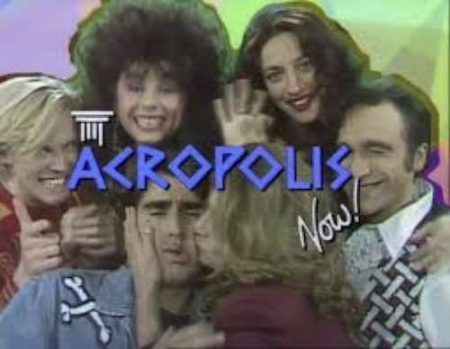
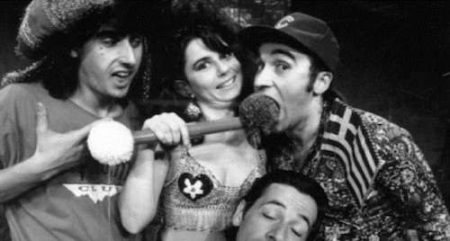
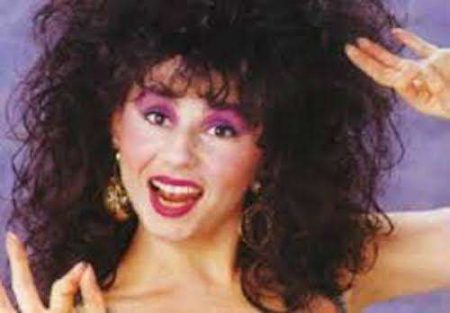

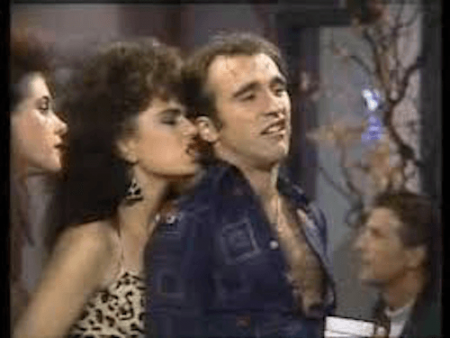



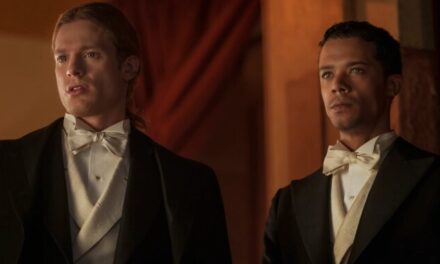

For my Film class I’ve been researching diversity in Australian media and it’s importance, and found this post incredibly informative! Your personal experiences are a great addition and add a lot of depth. Really great seeing how many different sources you engaged with while reflecting your insight. Great article and very eye opening! 🙂